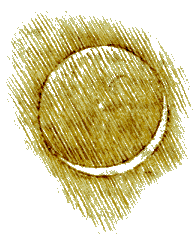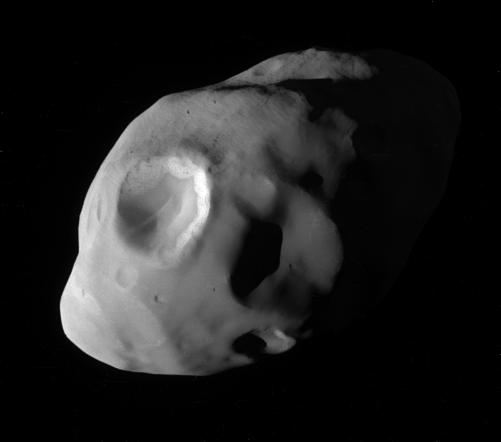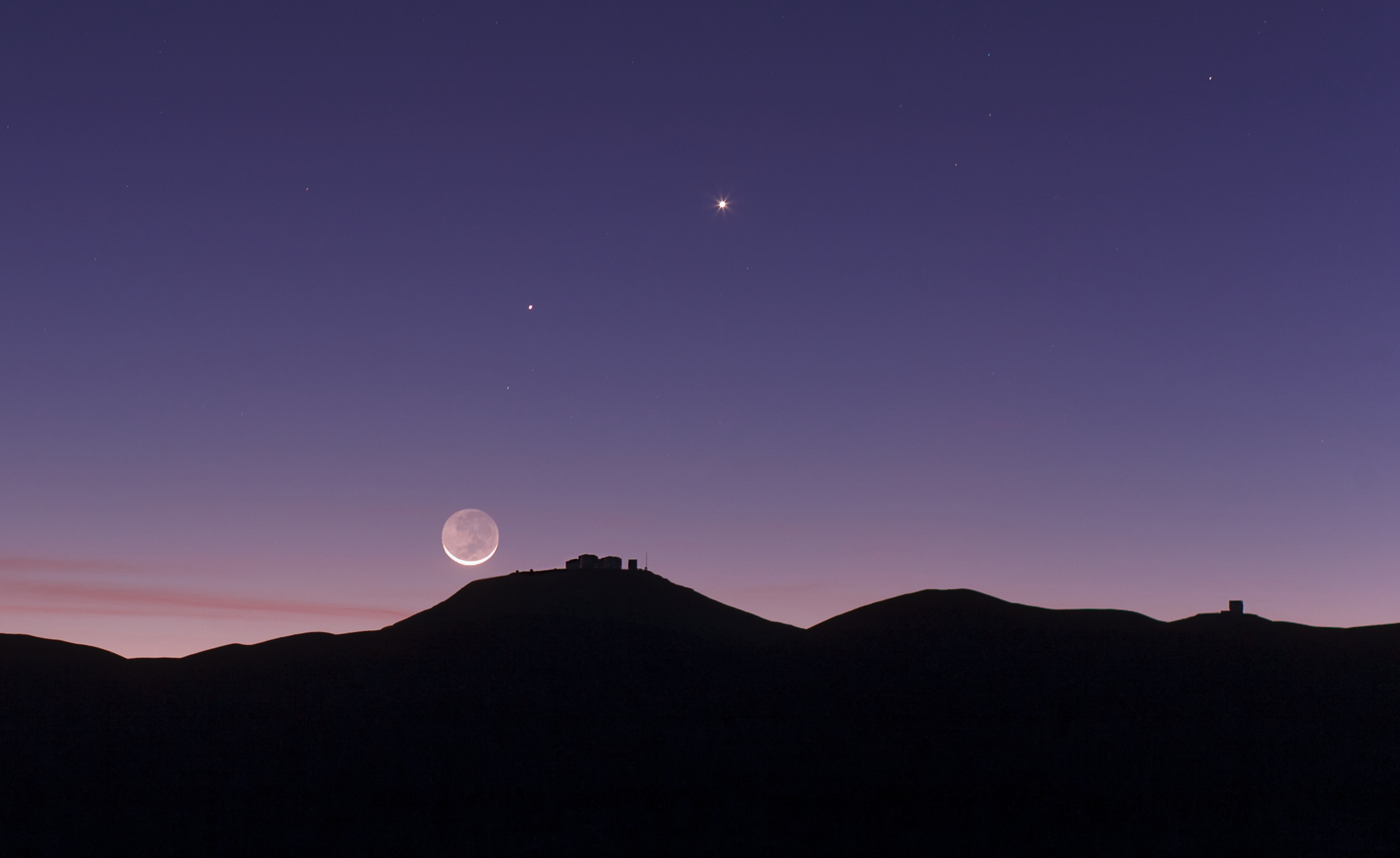Planetshine on:
[Wikipedia]
[Google]
[Amazon]

 Planetshine is the dim illumination, by sunlight reflected from a
Planetshine is the dim illumination, by sunlight reflected from a
 Earthshine is visible earthlight reflected from the
Earthshine is visible earthlight reflected from the  Earthshine is most readily visible from a few nights before until a few nights after a
Earthshine is most readily visible from a few nights before until a few nights after a 
 Studies of earthshine can be used to show how the Earth's cloud cover varies over time. Preliminary results show a 6.5% dip in cloud cover between 1985 and 1997 and a corresponding increase between 1997 and 2003. This has implications for climate research, especially with regards to
Studies of earthshine can be used to show how the Earth's cloud cover varies over time. Preliminary results show a 6.5% dip in cloud cover between 1985 and 1997 and a corresponding increase between 1997 and 2003. This has implications for climate research, especially with regards to

 Ringshine is when sunlight is reflected by a planet's ring system onto the planet or onto the moons of the planet. This has been observed in many of the photos from the ''Cassini'' orbiter.
Ringshine is when sunlight is reflected by a planet's ring system onto the planet or onto the moons of the planet. This has been observed in many of the photos from the ''Cassini'' orbiter.
 Scientists at
Scientists at
link
an
preprint
* Seager, S., Turner, E. L., Schafer, J., & Ford, E. B. (2005) `'Vegetation's Red Edge: A Possible Spectroscopic Biosignature of Extraterrestrial Plants'' Astrobiology, Volume 5, Issue 3, pp. 372–390.
link
an
preprint
* Rush – Earthshine from album Vapor Trails (Remastered 2013). Music Lee, Lifeson. Lyrics Peart
19 April 2002
Space.com
American Geophysical Union
{{The Moon Lunar observation Light sources Observational astronomy Phenomena

 Planetshine is the dim illumination, by sunlight reflected from a
Planetshine is the dim illumination, by sunlight reflected from a planet
A planet is a large, rounded astronomical body that is neither a star nor its remnant. The best available theory of planet formation is the nebular hypothesis, which posits that an interstellar cloud collapses out of a nebula to create a ...
, of all or part of the otherwise dark side of any moon
The Moon is Earth's only natural satellite. It is the fifth largest satellite in the Solar System and the largest and most massive relative to its parent planet, with a diameter about one-quarter that of Earth (comparable to the width ...
orbiting the body. Planetlight is the diffuse reflection of sunlight from a planet, whose albedo can be measured.
The most observed and familiar example of planetshine is earthshine on the Moon
The Moon is Earth's only natural satellite. It is the fifth largest satellite in the Solar System and the largest and most massive relative to its parent planet, with a diameter about one-quarter that of Earth (comparable to the width ...
, which is most visible from the night side of Earth
Earth is the third planet from the Sun and the only astronomical object known to harbor life. While large volumes of water can be found throughout the Solar System, only Earth sustains liquid surface water. About 71% of Earth's surf ...
when the lunar phase is crescent or nearly new, without the atmospheric brightness
Brightness is an attribute of visual perception in which a source appears to be radiating or reflecting light. In other words, brightness is the perception elicited by the luminance of a visual target. The perception is not linear to luminance, ...
of the daytime
Daytime as observed on Earth is the period of the day during which a given location experiences natural illumination from direct sunlight. Daytime occurs when the Sun appears above the local horizon, that is, anywhere on the globe's he ...
sky. Typically, this results in the dark side of the Moon being bathed in a faint light.
Planetshine has also been observed elsewhere in the Solar System
The Solar System Capitalization of the name varies. The International Astronomical Union, the authoritative body regarding astronomical nomenclature, specifies capitalizing the names of all individual astronomical objects but uses mixed "Solar ...
. In particular, the ''Cassini'' space probe used Saturn's shine to image portions of the planet's moons, even when they do not reflect direct sunlight. The ''New Horizons
''New Horizons'' is an interplanetary space probe that was launched as a part of NASA's New Frontiers program. Engineered by the Johns Hopkins University Applied Physics Laboratory (APL) and the Southwest Research Institute (SwRI), with a t ...
'' space probe similarly used Charon's shine to discover albedo variations on Pluto's dark side.
Although using a geocentric model in 510 AD, Indian mathematician and astronomer Aryabhata was the first to correctly explain how planets and moons have no light of their own, but rather shine due to the reflection of sunlight in his Aryabhatiya.
Earthshine
Moon
The Moon is Earth's only natural satellite. It is the fifth largest satellite in the Solar System and the largest and most massive relative to its parent planet, with a diameter about one-quarter that of Earth (comparable to the width ...
's night side. It is also known as the Moon's ''ashen glow'' or as "the new Moon with the old Moon in her arm".
 Earthshine is most readily visible from a few nights before until a few nights after a
Earthshine is most readily visible from a few nights before until a few nights after a new moon
In astronomy, the new moon is the first lunar phase, when the Moon and Sun have the same ecliptic longitude. At this phase, the lunar disk is not visible to the naked eye, except when it is silhouetted against the Sun during a solar eclip ...
, during the (waxing or waning) crescent phase. When the lunar phase is new as viewed from Earth
Earth is the third planet from the Sun and the only astronomical object known to harbor life. While large volumes of water can be found throughout the Solar System, only Earth sustains liquid surface water. About 71% of Earth's surf ...
, Earth would appear nearly fully sunlit from the Moon. Sunlight is reflected from Earth to the night side of the Moon. The night side appears to glow faintly, and the entire disk of the Moon is dimly illuminated.

Leonardo da Vinci
Leonardo di ser Piero da Vinci (15 April 14522 May 1519) was an Italian polymath of the High Renaissance who was active as a painter, Drawing, draughtsman, engineer, scientist, theorist, sculptor, and architect. While his fame initially re ...
explained the phenomenon in the early 16th century when he realized that both Earth and the Moon reflect sunlight at the same time. Light is reflected from Earth to the Moon and back to Earth as earthshine.
Earthshine is used to help determine the current albedo of Earth. The data are used to analyze global cloud cover
Cloud cover (also known as cloudiness, cloudage, or cloud amount) refers to the fraction of the sky obscured by clouds on average when observed from a particular location. Okta is the usual unit for measurement of the cloud cover. The cloud c ...
, a climate factor. Oceans reflect the least amount of light, roughly 10%. Land reflects 10–25% of sunlight, and clouds reflect around 50%. Thus, the part of Earth where it is daytime
Daytime as observed on Earth is the period of the day during which a given location experiences natural illumination from direct sunlight. Daytime occurs when the Sun appears above the local horizon, that is, anywhere on the globe's he ...
and from where the Moon is visible determines how bright the earthshine on the Moon appears at any given time.
 Studies of earthshine can be used to show how the Earth's cloud cover varies over time. Preliminary results show a 6.5% dip in cloud cover between 1985 and 1997 and a corresponding increase between 1997 and 2003. This has implications for climate research, especially with regards to
Studies of earthshine can be used to show how the Earth's cloud cover varies over time. Preliminary results show a 6.5% dip in cloud cover between 1985 and 1997 and a corresponding increase between 1997 and 2003. This has implications for climate research, especially with regards to global warming
In common usage, climate change describes global warming—the ongoing increase in global average temperature—and its effects on Earth's climate system. Climate variability and change, Climate change in a broader sense also includes ...
. All clouds contribute to an increased albedo, however some clouds have a net warming effect because they trap more heat than they reflect, while others have a net cooling effect because their increased albedo reflects more radiation than they trap heat. So while the Earth's albedo is measurably increasing, the uncertainty over the amount of heat trapped means the overall effect on global temperature remains unclear.
Retroreflection
Features onEarth
Earth is the third planet from the Sun and the only astronomical object known to harbor life. While large volumes of water can be found throughout the Solar System, only Earth sustains liquid surface water. About 71% of Earth's surf ...
, the Moon
The Moon is Earth's only natural satellite. It is the fifth largest satellite in the Solar System and the largest and most massive relative to its parent planet, with a diameter about one-quarter that of Earth (comparable to the width ...
, and some other bodies have, to some extent, retroreflective
A retroreflector (sometimes called a retroflector or cataphote) is a device or surface that reflects radiation (usually light) back to its source with minimum scattering. This works at a wide range of angle of incidence, unlike a planar mirror, ...
properties. Light striking them is backscattered, or diffusely reflected preferentially back in the direction from which it has come rather than in other directions. If the light comes from the Sun, it is reflected preferentially back toward the Sun and in nearby directions. For example, when its phase is full, the Moon reflects light preferentially toward the Sun and also Earth, which is in almost the same direction. As viewed from Earth, the full Moon
The full moon is the lunar phase when the Moon appears fully illuminated from Earth's perspective. This occurs when Earth is located between the Sun and the Moon (when the ecliptic longitudes of the Sun and Moon differ by 180°). This mean ...
therefore appears brighter than it would if it scattered
Scattered may refer to:
Music
* ''Scattered'' (album), a 2010 album by The Handsome Family
* "Scattered" (The Kinks song), 1993
* "Scattered", a song by Ace Young
* "Scattered", a song by Lauren Jauregui
* "Scattered", a song by Green Day from ' ...
light uniformly in all directions. Similarly, near new moon
In astronomy, the new moon is the first lunar phase, when the Moon and Sun have the same ecliptic longitude. At this phase, the lunar disk is not visible to the naked eye, except when it is silhouetted against the Sun during a solar eclip ...
, sunlight that has been backscattered from Earth toward the Sun and also the Moon, which is in almost the same direction, and then backscattered again from the Moon toward Earth appears much brighter, as viewed from Earth, than it would without the retroreflective effects.
The retroreflection is produced by spheres of transparent material on the reflecting surface. When it encounters a transparent sphere, light is preferentially reflected and refracted in a path, within the sphere, which exits it in the direction from which it entered. On Earth, the spheres are droplets of water in clouds. On the Moon, large numbers of solid glassy spheres are found on the surface. They are thought to have been formed from drops of molten ejecta, produced by impact events, which cooled and solidified before falling back to the surface.
Ringshine

 Ringshine is when sunlight is reflected by a planet's ring system onto the planet or onto the moons of the planet. This has been observed in many of the photos from the ''Cassini'' orbiter.
Ringshine is when sunlight is reflected by a planet's ring system onto the planet or onto the moons of the planet. This has been observed in many of the photos from the ''Cassini'' orbiter.
Search for terrestrial planets
 Scientists at
Scientists at NASA
The National Aeronautics and Space Administration (NASA ) is an independent agency of the US federal government responsible for the civil space program, aeronautics research, and space research.
NASA was established in 1958, succeedi ...
's Navigator Program, which specializes in the detection of terrestrial planets, have backed the launch of a Terrestrial Planet Finder (TPF) mission. TPF would detect light reflected by planets orbiting stars to investigate whether they could harbor life. It would use advanced telescope technologies to look for life-marks in the light reflected from the planets, including water, oxygen and methane.
The European Space Agency
, owners =
, headquarters = Paris, Île-de-France, France
, coordinates =
, spaceport = Guiana Space Centre
, seal = File:ESA emblem seal.png
, seal_size = 130px
, image = Views in the Main Control Room (120 ...
has a similar mission, named Darwin
Darwin may refer to:
Common meanings
* Charles Darwin (1809–1882), English naturalist and writer, best known as the originator of the theory of biological evolution by natural selection
* Darwin, Northern Territory, a territorial capital city i ...
, under consideration. This will also study the light from planets to detect the signatures of life.
Unlike many traditional astronomical challenges, the most serious challenge for these missions is not gathering enough photons from the faint planet, but rather detecting a faint planet that is extremely close to a very bright star. For a terrestrial planet, the contrast ratio of planet to its host stars is approximately ~10−6-10−7 in the thermal infrared or ~10−9-10−10 in the optical/near infrared. For this reason, Darwin and Terrestrial Planet Finder-I will work in the thermal infrared. However, searching for terrestrial planets in the optical/near infrared has the advantage that the diffraction limit corresponds to a smaller angle for a given size telescope. Therefore, NASA
The National Aeronautics and Space Administration (NASA ) is an independent agency of the US federal government responsible for the civil space program, aeronautics research, and space research.
NASA was established in 1958, succeedi ...
is also pursuing a Terrestrial Planet Finder-C mission that will search for and study terrestrial planets using the optical (and near infrared) wavelengths. While Terrestrial Planet Finder-C aims to study the light of extrasolar planets, Darwin and Terrestrial Planet Finder-I will search for thermal infrared light that is reradiated (rather than scattered) by the planet.
In preparation for these missions, astronomers have performed detailed earthshine observations, since earthshine has the spectroscopic characteristics of light reflected by the Earth. Astronomers have paid particular attention to whether earthshine measurement can detect the red edge, a spectral feature that is due to plants. The detection of a similar spectral feature in light from an extrasolar planet would be particularly interesting, since it might be due to a light-harvesting organism. While the red edge is almost certainly the easiest way to directly detect life on Earth via earthshine observations, it could be extremely difficult to interpret a similar feature due to life on another planet, since the wavelength of the spectral feature is not known in advance (unlike most atomic or molecular spectral features).
See also
* André-Louis Danjon * Ashen light * Danjon scale *List of reflected light sources
This is a list of reflected sources of light examples in contrast to the List of light sources. The list is oriented towards visible light reflection.
Celestial and atmospheric light
*
*
**
* *
*
*{{annotated link, Fog bow
See also
*Reflecti ...
References
* Ford, E. B., Turner, E.L. & Seager, S. (2001) `'Characterization of extrasolar terrestrial planets from diurnal photometric variability'' Nature, Volume 412, Issue 6850, pp. 885–887link
an
preprint
* Seager, S., Turner, E. L., Schafer, J., & Ford, E. B. (2005) `'Vegetation's Red Edge: A Possible Spectroscopic Biosignature of Extraterrestrial Plants'' Astrobiology, Volume 5, Issue 3, pp. 372–390.
link
an
preprint
* Rush – Earthshine from album Vapor Trails (Remastered 2013). Music Lee, Lifeson. Lyrics Peart
External links
19 April 2002
Space.com
American Geophysical Union
{{The Moon Lunar observation Light sources Observational astronomy Phenomena